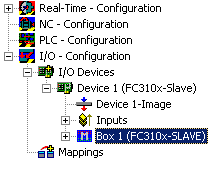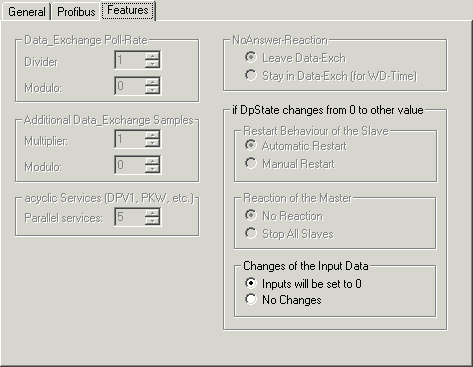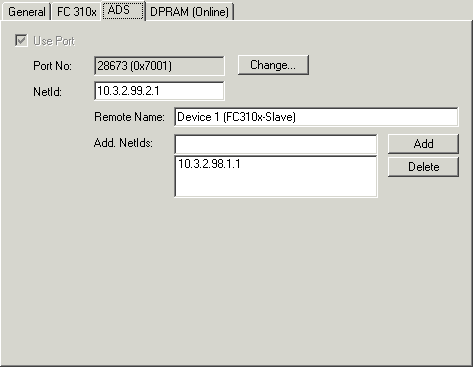Slave
As a slave, the PROFIBUS DP and PROFIBUS DPV1 protocols are supported.
PROFIBUS DP
In order to configure the slave for cyclic DP operation, proceed as follows in the TwinCAT System Manager:
Configure DP slave
It is first necessary to configure a "PROFIBUS Slave FC310x, PCI" I/O device (right-click on "I/O devices", and then selecting "Append Device"). The device and a box are appended (to this end the GSD file "TCDPSLAV.GSD" must be in directory "TwinCAT\Io\PROFIBUS"):
Find the corresponding channel on the tab "FC310x" (TwinCAT 2.8 or TwinCAT 2.9) of the device ("Search" button), adjust the station address and the baud rate, if necessary (the default setting is 12 Mbit/s).
Append modules
Modules are to be appended to the box corresponding to the data that is to be transferred cyclically. This is done by clicking with the right mouse button on the box, and then selecting "Append modules":
Configuring the Master
The GSD file "TCDPSLAV.GSD" is to be taken out of the "TwinCAT\Io\PROFIBUS" directory to configure the master. The modules must be inserted in the master configuration in the same sequence as they are in the configuration of the slave in the System Manager.
Error Reactions
In the default setting the inputs of the DP slave are set to 0, if the DP slave is not involved in data exchange. It is possible to change this input error reaction to "No changes" under Changes of the Input Data on the "Features" tab for the box:
PROFIBUS DPV1
The DP slave supports a DPV1-MSAC_C1 server connection that is established along with the cyclic connection. This can be used so that larger quantities of acyclic data can be transferred alongside the cyclic data. A DPV1 read telegram received by the master is reported to the PLC as an ADS read indication, while a DPV1 write telegram is reported to the PLC as an ADS write indication. The PLC program is then responsible for the read or write response. To do this, the ADS read response or ADS write response functions are to be called.
MSAC-C1 Read
A DPV1-MSAC_C1 read indication is mapped in an ADS read indication as follows:
An ADS read response is mapped in a DPV1-MSAC_C1 read response as follows:
MSAC-C1 Write
A DPV1-MSAC_C1 write indication is mapped in an ADS write indication as follows:
An ADS read response is mapped in a DPV1-MSAC_C1 read response as follows:
ADS Interface from TwinCAT 2.9
Communication can also take place via ADS in TwinCAT systems. The functionality is extremely similar to that of an ADS connection between two PCs over Ethernet, although transmission takes place over PROFIBUS, with the exception that the requester that initiates the ADS job is always the DP master PC. An FC310x DP master is then linked to an FC310x-DP slave.
In the DP master, the ADS Interface should be activated on the ADS tab of the box, and the Net-ID of the DP slave PC is to be entered:
For the DP slave, the Net-ID of the DP master PC should be entered under Add. NetIDs in the ADS tab of the device:




